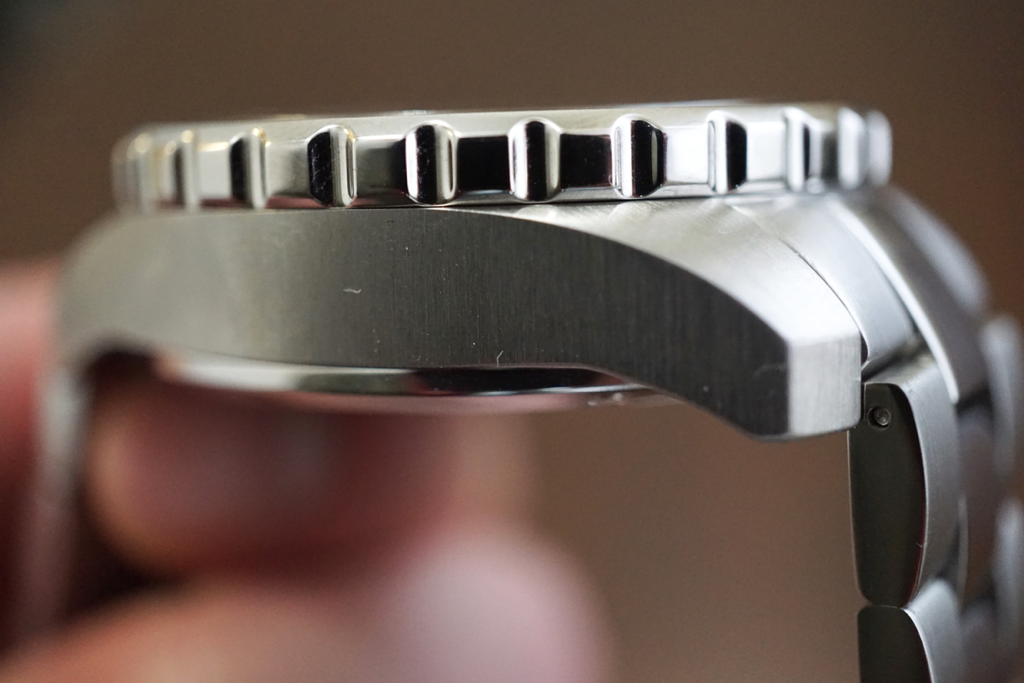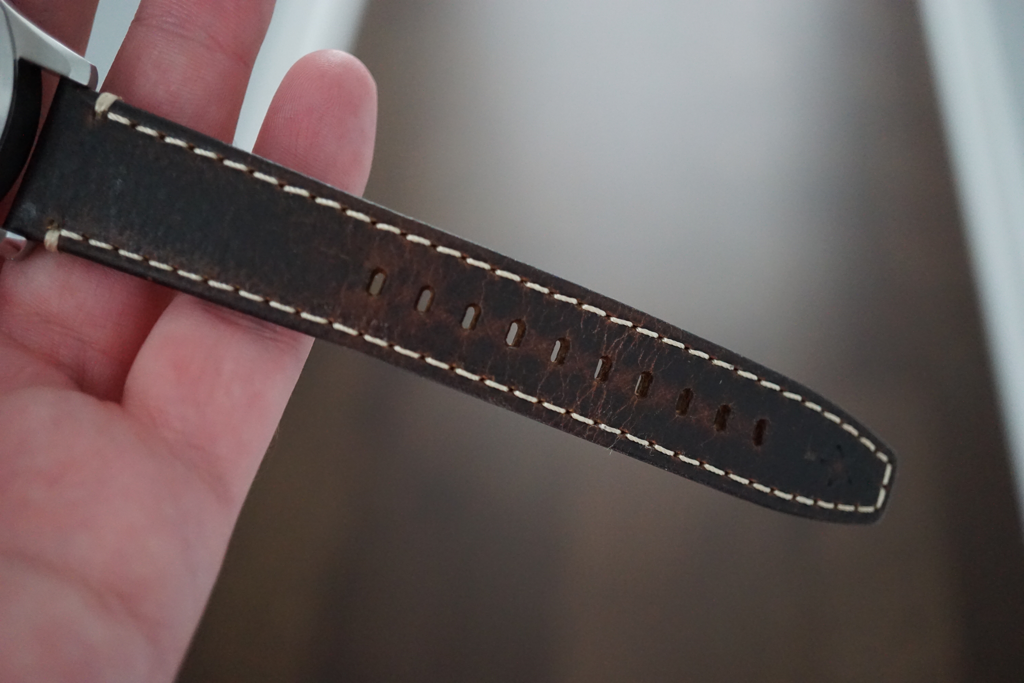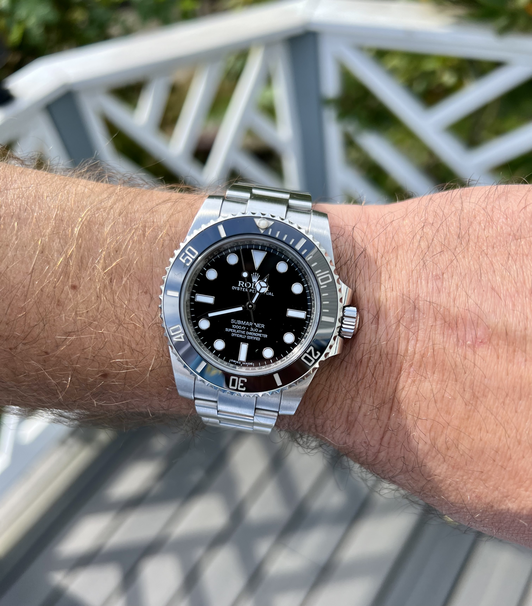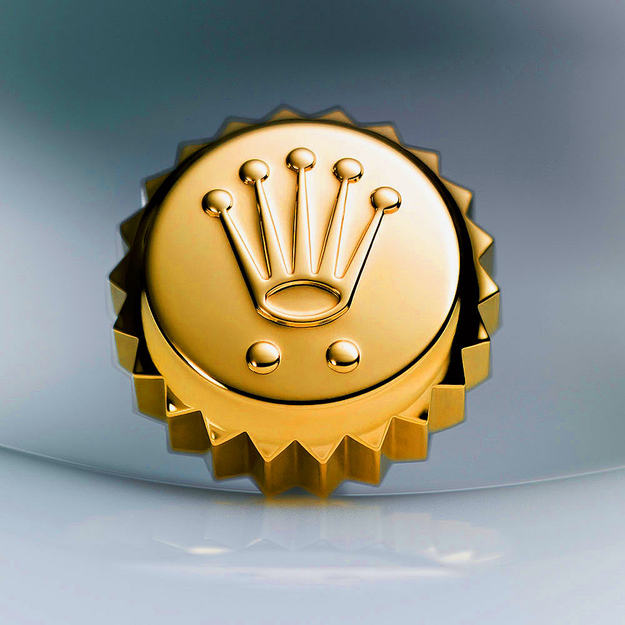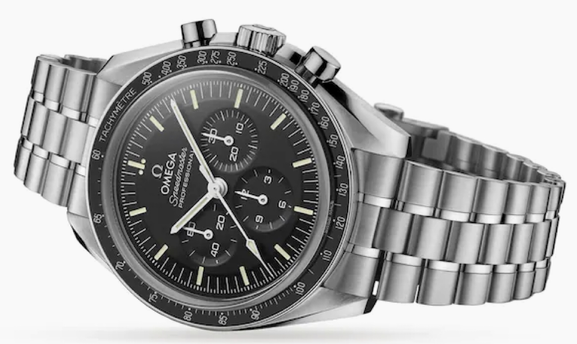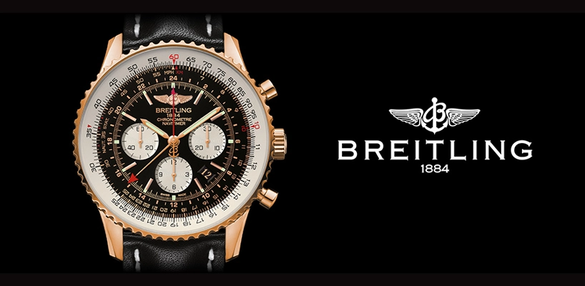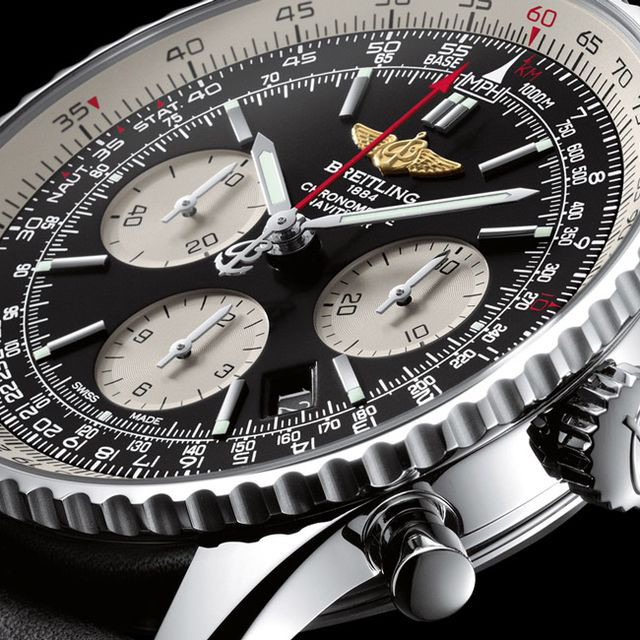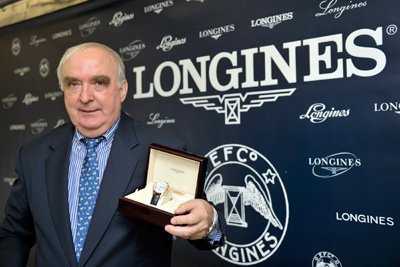CaseThe Melbourne Assembled Australian Sorrento diver is quite a classy and dressy piece. However, I believe it combines both a diver, dress watch, and functional everyday tool watch all in one 42MM package. It features reasonable dimensions such as the 50MM lug to lug distance and 13.5MM case thickness. The 200M rated case is suitable for diving and really finely cut and brushed out of 316L stainless steel. I really did take notice of the brushing work on the case flanks, it is quite good for this pricepoint of 950 AUD. Some other nice details include the raised vintage dive helmet on the screw down caseback which I found charming. DialNow, the dial is where it gets exciting...It is a multi-layer ceramic dial which is usually only seen in luxury watchmaking. It also features planks flowing horizontally which mimic the decl of a classic boat. The brushed hands play nicely and are extremely legible under the genuine sapphire AR coated crystal. The markers themselves are lumed of course, with blue BGW9 lume and I found it to be quite responsive and long lasting. Another interesting component is the Aluminum 120 Click bezel. OK - Bezel action. The bezel action is solid, with minimal backplay nor alignment issues. The actual ceramic insert features a wave pattern which really caught my eyes and almost reminded me slightly of the Omega Seamaster 300 wave dial models. A lot of thought has gone into making this dial, and it certainly shows in the results. MovementAt this pricepoint we are either expecting an ETA2824 or a SW200..Melbourne chose the SW200 Swiss automatic calibre which is essentially the same movement as a 2824. It beats at 28,800 BPH and features 26 jewels along with a quickset date located at 3:00. In terms of power reserve you can expect around 38 hours...Accuracy wise....+4 Seconds per day on my exact example. Who needs chronometer rated movements when brands regulate the same movement themselves? Quick Release BraceletThe solid oyster style 316L steel bracelet features screw in links, a milled clasp, and solid end links which contain quick-release pins. Now, usually we only see quick release pins on various nato, leather, and canvas straps. However, MWC has somehow incorporated it into their steel bracelet. It really is quite effortless to switch to a nice nato or rubber band if you are looking for a lighter option. The comfort is decent and the bracelet does not pull my hair, which is the first thing I look for. It can also accommodate larger wrists. ConclusionFurthermore, the Sorrento diver offers a rare classic blend between dress/dive styling for a reasonable price. It checks all the boxes I look for when looking to add a new piece to my growing collection of watches. I feel that this brand saw a niche to fill, and they did quite well.
0 Comments
Click to set custom HTML
Case
The Casio WorldTime is probably the cheapest most functional water resistant Casio digital watch available on the market today. At around $25 USD for the bracelet variation and even less for the rubber band version, it sure does pack a punch for the money. The case itself is comrpsied of a Polymer and painted in a Silver color measuring in at 40MM in diameter. The thickness is not too bad either at 12.5MM with a lug to lug distance of 44MM. In terms of design, its pretty modern, and classic at the same time. Its’ weight at 40 grams does not feel substantial on the wrist and even I sometimes forget I am wearing a watch.
Digital Display Dial
The functions are all laid out orderly with Separate windows covered by a Plastic crystal. Now, plastic will eventually scratch if put to use - but what can we honestly expect for the money? If we look at the top left of the watch, your home time is displayed in a circular subdial. To the right we have a world map which states the area of the continent in which your watch is programmed too, and cycles around in world time mode. Finally, at the bottom your main functions such as Time, Worldtime, Day-Date, 5 Alarms, StopWatch, and Countdown timer are displayed as you cycle through them with the metal pusher at 8:00. The pushers themselves are small, and really keep out of the way of your wrist. The LED lights up for a couple seconds and then fades as you push the 2:00 pusher for easy reading in dark areas. It looks like a really complicated watch, but is actually quite simple to use at the end of the day.
Metal Bracelet
The steel bracelet is actually quite cheap feeling, and constructed with bars for adjustment. It features an 18MM lug width and honestly looks odd if you decide to throw it on a NATO or some other type of strap due to the case over powering it. However, the bracelet is comfortable and really doesn’t pull hair. There are even four micro adjustments and a signed steel clasp. Do not get your hopes up for a decent quality bracelet on a $25 watch - but do keep in mind it is useable and can hold
up to daily use. Conclusion
Furthermore, Casio definitely
does offer quite an outstanding watch at around $25 and $15 for the rubber version. It is definitely a decent piece which contains a lot of useful functions which get much use in my daily day to day life. Thanks for taking the time to read another article on Watch Addict and stay tuned to our YouTube channel “Watch Addiction Watch Reviews” for a full hands-on experience. PackagingCaseThe Ergon Maelstrom diver features an all CUSN8 solid bronze brushed case with an exact diameter of 40MM. In terms of lug width we are looking at 20MM and width is 12.5MM. This is honestly a rational size for the modern dive watch. This is a true dive watch also which can dive to depths of 300 Meters and features a screw down crown and solid steel screw caseback. Some small details that catch my attention are the slightly polished chamfered lugs and the detailed Tornado logo which is raised on the caseback. DialThe grainy black dial reminds me of a vintage 60s diver with its large lumed markers and submariner style 120 click ceramic bezel ( lumed also ). I do like the fact that the handset is unique and does not copy...well a submariner! The logo below 12:00 is subtle and flows well with the dial design, also keeping symmetry. Above all this lays a domed Sapphire with AR coating and a matching date window above 6:00. MovementThis is where the real value comes into play with the Maelstrom. Beating away inside is a Swiss Made automatic Selitta SW-200-1 movement. This movement contains 26 jewels, 38 hours of power reserve, and beats away at 28.8K. It is a true workhorse swiss movement and keeps great time at around +6-7 seconds a day. StrapsA nice 20MM tropic style rubber band is included with this model and the quality is decent, around the same Quality that most of the Zelos Mako watch straps come equippee on. However, a higher quality waxed Horween leather quick release strap is also included in the roll. It is definitely a very good quality and quite supple on wrist. However, I usually like to get my watches wet so I think I will be sticking with the tropic strap which plays along well with the vintage aesthetic here. ConclusionFurthermore, after doing some research I have yet to find a better value bronze automatic dive watch on the market. It definitely checks all my boxes which include Sapphire, Swiss automatic movement, decent quality bands, and a delightful watch roll which I will get a lot of use from when traveling or on the go. Thanks for taking the time to read and please do watch the full video review on YouTube linked above. CaseThis Seiko 5 is definitely a larger watch, but not so large it can’t be worn by a man with an average 6.5” wrist like myself. The case is solid 316L stainless steel which featuring a smooth sandblasted finish with a neat and precise cut at each corner. In terms of diameter we are looking at 44MM and 12MM in thickness. I do like the fact that this watch can be used in the water as it is rated to 100 Meters. By no means is this a true diving watch - but it will sure survive the pool or lake just fine. If we flip the watch over there is a pretty large exhibition window displaying the Seiko automatic caliber which powers this model. I can definitely say this watches feel and shape falls into the explorers or camping category. DialThis watch was certainly meant to be legible, and that ot is. The dial is covered by seikos’ proprietary hardlex crystal which is essentially a hardened mineral crystal and is supposed to be a bit more shatter proof than your standard mineral. The deep blue dial is spacious and contains large applied lumed markers with a day and date cutout at the 3:00 position in white with black numerals. Details such as the bold sword hands and red arrow tipped seconds hand provide great legibility at any given time. The best feature of this model is the friction coin edged bi-directional bezel which can be used as a compass if your electronic device happens to run out of battery. It is quite simple to do this by pointing the hour hand towards the sun in a level position and rotating the “S” in between the hour and minute hand. Please keep in mind the sun has to be out and you must be in the Northern Hemisphere to use it this way. I have found the lume to be quite good and evenly applied as most Seiko 5s are, but please do not expect “Lumibrite” status with this one. MovementInside beats the Seiko In-House 4r36 automatic movement (NH36). This movement beats at 3 Hertz and features hand winding as well as a hacking function. It also includes the day and date which is framed in the window at 3:00. You can expect around +4-10 seconds a day with these movements and should honestly not have any issues for years to come. Two Piece Canvas StrapOne thing that surprised me was the two piece 22MM straight blue canvas band that it came equipped with. Now, usually Seiko doesn’t offer the highest quality of straps and bands with their entry level models but this one is of decent quality. It is definitely wearable and not harsh on the skin nor stiff. The matching buckle is also very slim and basically conforms to the shape of your wrist. Lastly, if you did not notice this piece features drilled lug holes, which makes it a breeze to swap straps out. ConclusionFurthermore, I am quite content with my purchase and have really found no quality control issues nor huge complaints. I would maybe like to see the removal of the “5” logo , as it cheapens the watch a bit I have come to realize after owning a few Seiko 5 models. One other thing id change is the overall size to around 42-43MM. Now, that is just my personal preference due to my own wrist dimensions, so this won’t apply to all. For the money, I think you are getting a lot of watch and a decent quality one at that. There may be an issue sourcing one of these models as I believe they are discontinued, and prices may be a bit higher than they were a year ago.. Use code ERIKHANDLER20 save 20% on whole websiteCaseThe solid 316L stainless steel case of the Wreck mimics a watch that would have been in a shipwreck and found many years later. It has a forced age process and looks quite fun. The actual diameter is 44MM while the thickness is 13.6MM. In terms of lug to lug distance we are looking at 50MM. These dimensions suggest quite a larger watch, but it really does not wear all that big due to its’ cuved profile. If we flip the watch over we get a nice glimpse into the inner workings of the Seiko NH35 automatic calibre powering this piece. This is a dive watch style, but rated at 100M with a screw down crown I would not call it a professional dive watch. DialThe scratched Green dial on this model contains applied markers and two numerals which are lumed with vintage style superluminova. The dial is certainly legible and easy to read at a glance thanks to the larger case diameter. The neatest part of the Wreck is the aged and weathered green aluminum bezel, which is 120 Clicks. The bezel action is pretty decent with absolute zero backplay and no alignment issues. Some other small details that caught my eye were the lollipop seconds hand with a pop of orange, matching text above 6:00. MovementThe well known and trusted Seiko NH35A powers the wreck and is a great robust affordable caliber. It beats at 3 HZ, contains 24 Jewels, and features hand winding/hacking. This is pretty much the go-to movement for affordable watches as it performs much better in my opinion than the Miyota 8 series movements. Strap SuppliedThe typical water resistant treated genuine leather 22MM brown strap is equipped on this iteration and it feels right at home. The strap also features an aged buckle which matches the case just fine. There is no need to break these straps in as they come quite flexible and ready to wear. ConclusionFurthermore, if you are a fan of vintage watches and simply cannot afford one, or do not want to spend thousands on repairs - this could be a watch you can enjoy for what it is. The quality and value for money is definitely there at a pricepoint below $300 USD ( $250 ), and if you use the code WA20 you can save 20% when this watch is released at the end of March 2019.
CaseThe Charlie Paris Initial Calendar is comprised of 316L solid stainless steel, the industry standard. Its’ shape is somewhat bulbous and features long downward teardrop style lugs. In terms of finishing, we get a completely high polished case, which came out good for this pricepoint - without any noticeable blemishes or inconsistencies. The diameter comes in at a wonderful 40MM while width measures in at 13.5MM. The shape of the case makes it really pop on the wrist, for a rather classical, slightly bland dial drags behind. A nice feature is the sapphire exihibition caseback which features a glimpse into the automatic calibre empowering the watch. DialThe dial is a rather no nonsense calendar layout, featuring a slighly black sandblasted finish. It also features your Day of the week, Month, and Date in 3 different subdials. Being that these pieces are assembled in France , the sub dials are in French. A few details I enjoy is the large date cutout, which I found to be extremely legible on a dial that already contains much information...yet it does not seem cluttered. There are sharp polished applied indices which make time reading legible, as well as the sharp polished faceted dauphine style hour and minute hands. On top of all this lays a genuine Sapphire crystal, which one would honestly expect from a watch in the 5-600 dollar price range. MovementThe Miyota Japanese 9122 automatic movement is used in this model, which I think was a good choice. They are reliable, very accurate, and even have slight striping decoration on the mainplate. You can expect around 40 hours of power reserve from this movement while it beats at 28,800BPH and contains 26 jewels. If they were to use a Swiss automatic caliber, I believe the price would be almost double this...so wise move there. Leather BandA black soft and supple genuine leather band fitted with quick release pins was the choice for this model. However, they do have tons of options for different strap configurations on their web store. The black strap is definitely comfortable straight out of the box, and I honestly did not have to break it in at all. However, if you have a large wrist over 7.5” - I would reccommend an afrermarket strap as this will probably not accommodate your wrist. My wrist is 6.5” and I have around 3 holes left when fitted. ConclusionFurthermore, it is definitely a very traditional aesthetic they went for here, and I think it overall came out very good. I would put this watch more into the dress sector but that doesnt mean this would look out of place in casual clothing also. I love the fact that they are assembled in France - which I believe a lot more
companies located there should be doing as France has a long rich history of traditional watchmaking. |
Archives
February 2024
|
ROLEX HISTORY
Rolex is a Swiss luxury watch brand that was founded in 1905 by Hans Wilsdorf and Alfred Davis in London, England. The company originally began as Wilsdorf and Davis, but it was later renamed to Rolex in 1908.
The first Rolex watches were not manufactured in-house, but instead were made by other watchmakers and then branded with the Rolex name. However, Wilsdorf had a vision of creating a wristwatch that was both reliable and accurate, and he set out to develop his own movements.
In 1910, Rolex became the first wristwatch to receive the Swiss Certificate of Chronometric Precision, which was a testament to the accuracy of the watch. Over the years, Rolex continued to innovate and develop new technologies and features, such as the first waterproof wristwatch in 1926, the first self-winding mechanism in 1931, and the first wristwatch with a date display in 1945.
Rolex has also been associated with several famous individuals, including explorers, athletes, and celebrities. For example, Sir Edmund Hillary and Tenzing Norgay wore Rolex watches when they became the first people to reach the summit of Mount Everest in 1953. Rolex has also been the official timekeeper of several sporting events, including Wimbledon and the Formula 1 Grand Prix.
Today, Rolex is one of the most recognized and respected luxury watch brands in the world, known for its quality, precision, and timeless style.
The first Rolex watches were not manufactured in-house, but instead were made by other watchmakers and then branded with the Rolex name. However, Wilsdorf had a vision of creating a wristwatch that was both reliable and accurate, and he set out to develop his own movements.
In 1910, Rolex became the first wristwatch to receive the Swiss Certificate of Chronometric Precision, which was a testament to the accuracy of the watch. Over the years, Rolex continued to innovate and develop new technologies and features, such as the first waterproof wristwatch in 1926, the first self-winding mechanism in 1931, and the first wristwatch with a date display in 1945.
Rolex has also been associated with several famous individuals, including explorers, athletes, and celebrities. For example, Sir Edmund Hillary and Tenzing Norgay wore Rolex watches when they became the first people to reach the summit of Mount Everest in 1953. Rolex has also been the official timekeeper of several sporting events, including Wimbledon and the Formula 1 Grand Prix.
Today, Rolex is one of the most recognized and respected luxury watch brands in the world, known for its quality, precision, and timeless style.
OMEGA Watches History
Omega is a Swiss luxury watch brand founded in 1848 by Louis Brandt in La Chaux-de-Fonds, Switzerland. The brand initially operated under the name La Generale Watch Co. and produced pocket watches.
In 1894, Omega revolutionized the watch industry with the introduction of the 19-ligne Omega Calibre, which was more accurate and reliable than any other watch movement of the time. This innovation earned Omega numerous awards and accolades, and the brand quickly became known for its precision and quality.
In 1903, Omega was chosen as the official timekeeper for the Gordon Bennett Cup, an international balloon race. This marked the beginning of Omega's long-standing relationship with sports timing and its reputation as a reliable and accurate timekeeper.
In 1932, Omega became the first brand to be awarded the Olympic Cross of Merit for its outstanding contribution to sports timing at the Olympic Games. Since then, Omega has been the official timekeeper for numerous Olympic Games, and its timekeeping technology has continued to evolve and improve.
In the 1950s and 1960s, Omega's watches were worn by famous explorers and adventurers, including Sir Edmund Hillary and Tenzing Norgay during their ascent of Mount Everest in 1953, and Jacques Cousteau during his underwater expeditions.
In the 1960s, Omega introduced the Speedmaster, a chronograph watch that was originally designed for motorsports but became famous as the first watch worn on the moon during the Apollo 11 mission in 1969. The Speedmaster has since become one of Omega's most iconic and sought-after models.
Today, Omega continues to innovate and produce high-quality watches, including the Seamaster, Constellation, and De Ville collections. The brand also continues to be the official timekeeper for numerous sporting events, including the Olympic Games and the America's Cup.
In 1894, Omega revolutionized the watch industry with the introduction of the 19-ligne Omega Calibre, which was more accurate and reliable than any other watch movement of the time. This innovation earned Omega numerous awards and accolades, and the brand quickly became known for its precision and quality.
In 1903, Omega was chosen as the official timekeeper for the Gordon Bennett Cup, an international balloon race. This marked the beginning of Omega's long-standing relationship with sports timing and its reputation as a reliable and accurate timekeeper.
In 1932, Omega became the first brand to be awarded the Olympic Cross of Merit for its outstanding contribution to sports timing at the Olympic Games. Since then, Omega has been the official timekeeper for numerous Olympic Games, and its timekeeping technology has continued to evolve and improve.
In the 1950s and 1960s, Omega's watches were worn by famous explorers and adventurers, including Sir Edmund Hillary and Tenzing Norgay during their ascent of Mount Everest in 1953, and Jacques Cousteau during his underwater expeditions.
In the 1960s, Omega introduced the Speedmaster, a chronograph watch that was originally designed for motorsports but became famous as the first watch worn on the moon during the Apollo 11 mission in 1969. The Speedmaster has since become one of Omega's most iconic and sought-after models.
Today, Omega continues to innovate and produce high-quality watches, including the Seamaster, Constellation, and De Ville collections. The brand also continues to be the official timekeeper for numerous sporting events, including the Olympic Games and the America's Cup.
BREITLING Watches History
Breitling is a Swiss luxury watch brand that was founded in 1884 by Léon Breitling in the town of Saint-Imier in the Canton of Bern, Switzerland. Initially, the company specialized in producing chronographs and other precision timepieces for scientific and industrial purposes.
In 1915, Breitling introduced the first wrist-worn chronograph with a separate pusher to control the start, stop, and reset functions, which made it easier to use than previous models. This innovation helped establish Breitling as a leading maker of chronographs and other precision timepieces.
During the 1930s and 1940s, Breitling continued to innovate with the introduction of the first chronograph with a second independent pusher, which allowed for the recording of multiple elapsed times. The company also developed the Huit Aviation Department, which produced wristwatches for pilots and other aviation professionals.
In the 1950s, Breitling introduced the Navitimer, a wristwatch with a built-in slide rule that allowed pilots to perform complex calculations in-flight. The Navitimer became an instant classic and remains one of Breitling's most popular models to this day.
In the 1960s, Breitling continued to produce innovative timepieces, including the Chrono-Matic, which was the first automatic chronograph movement with a micro-rotor. The company also introduced the Emergency, a wristwatch with a built-in distress beacon that could be activated in case of an emergency.
In the years since, Breitling has continued to produce innovative and high-quality timepieces for a variety of applications, including aviation, diving, and sports. The company has also maintained a strong commitment to precision and accuracy, with many of its watches featuring COSC-certified movements. Today, Breitling is recognized as one of the world's leading luxury watch brands, with a reputation for innovation, quality, and style.
In 1915, Breitling introduced the first wrist-worn chronograph with a separate pusher to control the start, stop, and reset functions, which made it easier to use than previous models. This innovation helped establish Breitling as a leading maker of chronographs and other precision timepieces.
During the 1930s and 1940s, Breitling continued to innovate with the introduction of the first chronograph with a second independent pusher, which allowed for the recording of multiple elapsed times. The company also developed the Huit Aviation Department, which produced wristwatches for pilots and other aviation professionals.
In the 1950s, Breitling introduced the Navitimer, a wristwatch with a built-in slide rule that allowed pilots to perform complex calculations in-flight. The Navitimer became an instant classic and remains one of Breitling's most popular models to this day.
In the 1960s, Breitling continued to produce innovative timepieces, including the Chrono-Matic, which was the first automatic chronograph movement with a micro-rotor. The company also introduced the Emergency, a wristwatch with a built-in distress beacon that could be activated in case of an emergency.
In the years since, Breitling has continued to produce innovative and high-quality timepieces for a variety of applications, including aviation, diving, and sports. The company has also maintained a strong commitment to precision and accuracy, with many of its watches featuring COSC-certified movements. Today, Breitling is recognized as one of the world's leading luxury watch brands, with a reputation for innovation, quality, and style.
Longines
Longines is a Swiss luxury watch company that was founded in 1832 by Auguste Agassiz in the town of Saint-Imier, Switzerland. The company has a long and prestigious history in the world of watchmaking, and has been responsible for many innovations and milestones in the industry.
In the early days, Longines primarily produced pocket watches, and quickly gained a reputation for precision and accuracy. By the end of the 19th century, Longines had become one of the leading watchmakers in the world. In 1912, the company introduced the first chronograph wristwatch, which was quickly adopted by the military and aviation communities.
In the 1920s and 1930s, Longines continued to innovate with the introduction of the world's first quartz clock and the first wristwatch with an automatic winding mechanism. During World War II, Longines produced wristwatches for the British Royal Air Force, and continued to produce military watches for several decades afterwards.
In the post-war years, Longines became known for its elegant and sophisticated watches, particularly its "Conquest" line of watches. In the 1950s and 1960s, Longines was a favorite of celebrities and politicians, and its watches were frequently seen on the wrists of Elvis Presley, John F. Kennedy, and other famous figures.
In recent years, Longines has continued to produce high-quality watches that combine traditional Swiss craftsmanship with modern technology. The company is particularly known for its sport watches, including its "HydroConquest" line of diving watches and its "Conquest Classic" line of chronographs.
Today, Longines is owned by the Swatch Group, and remains a leading brand in the luxury watch industry. Its watches are prized for their precision, reliability, and timeless style.
In the early days, Longines primarily produced pocket watches, and quickly gained a reputation for precision and accuracy. By the end of the 19th century, Longines had become one of the leading watchmakers in the world. In 1912, the company introduced the first chronograph wristwatch, which was quickly adopted by the military and aviation communities.
In the 1920s and 1930s, Longines continued to innovate with the introduction of the world's first quartz clock and the first wristwatch with an automatic winding mechanism. During World War II, Longines produced wristwatches for the British Royal Air Force, and continued to produce military watches for several decades afterwards.
In the post-war years, Longines became known for its elegant and sophisticated watches, particularly its "Conquest" line of watches. In the 1950s and 1960s, Longines was a favorite of celebrities and politicians, and its watches were frequently seen on the wrists of Elvis Presley, John F. Kennedy, and other famous figures.
In recent years, Longines has continued to produce high-quality watches that combine traditional Swiss craftsmanship with modern technology. The company is particularly known for its sport watches, including its "HydroConquest" line of diving watches and its "Conquest Classic" line of chronographs.
Today, Longines is owned by the Swatch Group, and remains a leading brand in the luxury watch industry. Its watches are prized for their precision, reliability, and timeless style.
Tissot
Tissot is a Swiss watch brand that was founded in 1853 by Charles-Félicien Tissot and his son Charles-Émile Tissot in the town of Le Locle, Switzerland. The company has a long and rich history in the world of watchmaking, and has been responsible for many innovations and milestones in the industry.
In the early days, Tissot primarily produced pocket watches, and quickly gained a reputation for quality and precision. By the end of the 19th century, Tissot was one of the largest watchmakers in Switzerland, and was exporting its watches to countries around the world.
In the early 20th century, Tissot continued to innovate with the introduction of the first non-magnetic wristwatch, the first dual time-zone watch, and the first watch with a plastic case. During World War II, Tissot produced watches for the Allied forces, and continued to produce military watches for several decades afterwards.
In the post-war years, Tissot became known for its elegant and sophisticated watches, particularly its "Tissot Visodate" line of watches, which featured a date function and a distinctive "T" logo on the dial. In the 1970s, Tissot was one of the first Swiss watch brands to introduce quartz watches, which quickly became popular due to their accuracy and affordability.
In recent years, Tissot has continued to produce high-quality watches that combine traditional Swiss craftsmanship with modern technology. The company is particularly known for its sport watches, including its "T-Touch" line of watches, which feature touch-screen technology and a range of functions such as altimeter, compass, and thermometer.
Today, Tissot is part of the Swatch Group, and remains a leading brand in the watch industry. Its watches are prized for their quality, durability, and stylish design, and are worn by watch enthusiasts and collectors around the world.
In the early days, Tissot primarily produced pocket watches, and quickly gained a reputation for quality and precision. By the end of the 19th century, Tissot was one of the largest watchmakers in Switzerland, and was exporting its watches to countries around the world.
In the early 20th century, Tissot continued to innovate with the introduction of the first non-magnetic wristwatch, the first dual time-zone watch, and the first watch with a plastic case. During World War II, Tissot produced watches for the Allied forces, and continued to produce military watches for several decades afterwards.
In the post-war years, Tissot became known for its elegant and sophisticated watches, particularly its "Tissot Visodate" line of watches, which featured a date function and a distinctive "T" logo on the dial. In the 1970s, Tissot was one of the first Swiss watch brands to introduce quartz watches, which quickly became popular due to their accuracy and affordability.
In recent years, Tissot has continued to produce high-quality watches that combine traditional Swiss craftsmanship with modern technology. The company is particularly known for its sport watches, including its "T-Touch" line of watches, which feature touch-screen technology and a range of functions such as altimeter, compass, and thermometer.
Today, Tissot is part of the Swatch Group, and remains a leading brand in the watch industry. Its watches are prized for their quality, durability, and stylish design, and are worn by watch enthusiasts and collectors around the world.





